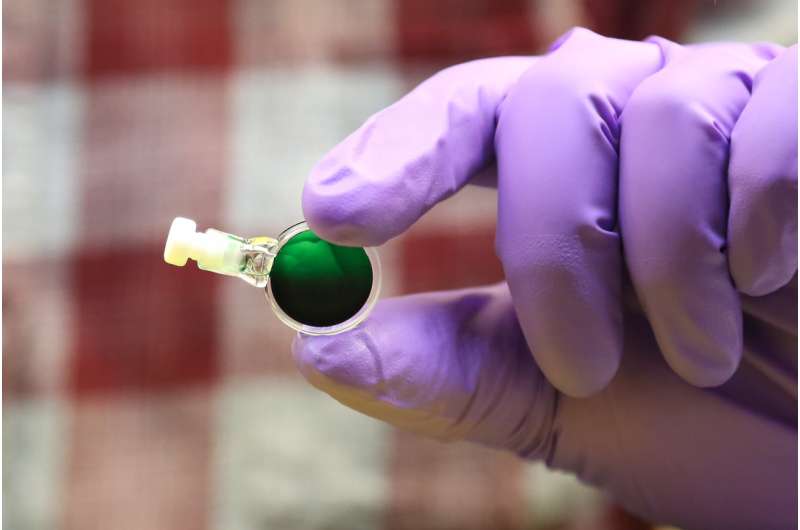Cyanobacterial studies examine cellular structure during nitrogen starvation

Using nondestructive neutron scattering techniques, scientists are examining how single-celled organisms called cyanobacteria produce oxygen and obtain energy through photosynthesis.
Collaborators from Washington University in St. Louis and the US Department of Energy's (DOE's) Oak Ridge National Laboratory (ORNL) are conducting a series of experiments to study the behavior of phycobilisomes—large antenna protein complexes in cyanobacteria cells—using the Bio-SANS instrument, beamline CG‑3, at the lab's High Flux Isotope Reactor (HFIR). Phycobilisomes harvest light to initiate photosynthesis, and a better understanding of this process could help researchers design more efficient solar panels and other artificial structures that mimic natural systems.
Neutrons can analyze these delicate structures without damaging or killing them and with more spatial accuracy than other techniques like microscopy.
"With Bio-SANS, we can actually see what is happening at the nanoscale level in real time in a living cell," said ORNL researcher Hugh O'Neill.
Phycobilisomes attach to cellular membranes where the light-dependent reactions of photosynthesis take place. Changing the antenna complexes of the phycobilisomes can have dramatic and far-reaching consequences in cyanobacteria.
"We are interested in modifying these antenna systems and observing the resulting structural changes," said Washington University's Michelle Liberton.
During previous visits to ORNL, the team artificially altered phycobilisomes by deleting certain genes in the cells. These modifications caused structural defects in the cellular membranes and other drastic changes in cell physiology.
Now they are naturally modifying the antenna complexes by starving the cyanobacteria for nitrogen, a nutrient essential for their basic functions. This depletion process causes the antenna to decrease in size, which in turn leads to significant cellular rearrangements and modifications in the membrane layers.
This chain of events occurs because the cells break down the phycobilisomes and use them as an alternative nitrogen source to survive.
"The phycobilisome antenna complex is a huge store of micronutrients in the cells," Liberton explained. "When the complex degrades, the cells have access to materials they can no longer get from the environment."
By determining the extent of these changes, the team hopes to better understand the structure-function relationship between cellular organization and natural modification. These processes can be immediately reversed by restoring nitrogen to the cells.
The researchers plan to compare these results to those recorded from their genetic studies to explore the differences between artificial and natural modifications and their effects on the intracellular makeup of cyanobacteria.
These findings support the Photosynthetic Antenna Research Center (PARC), a DOE-funded Energy Frontier Research Center based at Washington University since 2009. The center brings together an international network of experts from academia and research facilities, including ORNL, to study antenna systems and their role in photosynthesis.
"At the fundamental level, this research is related to how efficient natural systems use solar light," said Bio-SANS instrument scientist and PARC collaborator Volker Urban.
Such insights are invaluable for the PARC contributors hoping to improve sustainable technology inspired by the natural world.
Provided by Oak Ridge National Laboratory



















